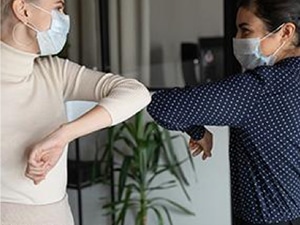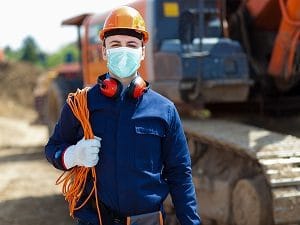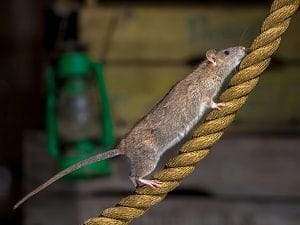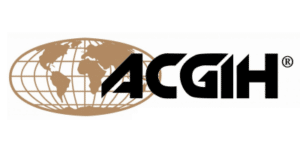Microbial Indoor Air Quality Assessments for a Safe Return to Work

Updated February 2021
Overall indoor air quality may seem low on the list of concerns for businesses whose employees are still largely working from home, but as stay-at-home orders begin to be lifted and workers begin to return cautiously to their desks, it will be increasingly important to assess for environmental issues that are not directly related to coronavirus.
But sources of mold and indoor allergens such as pollen, dust, bacteria, pest waste, unventilated bathrooms, damp HVAC cooling coils, and water leaks that may have accumulated while the building was empty also pose health risks. At a time of heightened vigilance, there are even more reasons to ensure that you don’t have indoor air issues that can cause allergy-related respiratory symptoms such as sneezing, coughing, wheezing, headaches and stuffy noses.
An Indoor Air Quality Assessment that includes testing of common indicators of IAQ such as temperature, relative humidity, CO2 and CO, in addition to microbial air sampling and analysis can provide peace of mind and a healthier environment for your returning employees, who may assume the worst at the first sign of allergy symptoms.
Air sampling for bioaerosols is often recommended when there is visible mold growth observed following water intrusions such as leaks from roofs, windowsills, or pipes. The resulting moisture can lead to mold growth and the proliferation of mold spores that travel easily throughout a building via the ventilation system.
Hidden Sources of Mold
It takes only a small patch of undetected moisture to create a mold or mildew problem. Omega’s Industrial Hygienists have seen cases in which a plastic floor protector under an office chair was replaced too soon after carpet cleaning, which did not allow the carpet underneath to dry completely. The resulting mold growth was not discovered until an employee’s symptoms prompted an IAQ assessment of the building.
Water intrusion can go undetected for long periods of time, particularly in older buildings where sunlight can cause exterior caulking and window seals to deteriorate. We have traced indoor mold issues back to a tiny crack in an exterior window caulking that created an opening for water to enter the building during heavy rains.
Searching for the source of water intrusion is a critical step when conducting an IAQ assessment for mold or moisture. If water is found, the source should be repaired, the water removed and the surface cleaned and dried immediately. A contractor may bring in dehumidifying equipment and air movers for this purpose.
Minimize Indoor Air Quality Risks with a Quick Response
When it comes to microbial air quality issues related to mold and other allergens, a quick response is critical to minimize health risks and damage that can quickly escalate.
Among other tools, the experts at Omega Environmental utilize moisture meters and infrared cameras that can detect subtle temperature differentials in building materials. A wall section that is slightly cooler than others can be an indication of moisture and can be confirmed using a moisture meter. Sophisticated indoor air sampling can reveal the presence of mold spores, pollen, dander, skin cells, and other allergens and contaminants. A careful analysis of the laboratory results includes a comparison of the indoor air to the outdoor air to distinguish baseline levels of allergens and other contaminants.
Environmental Expertise for Employee Health and Safety
Omega’s Industrial Hygienists have decades of experience helping businesses, developers, property owners, universities and other public agencies ensure the health and safety of their employees, students, and visitors as well as ensuring their compliance with environmental regulations.
To learn more about how we can help you ensure the safe return of your employees and staff, give us a call or click on the link below.










